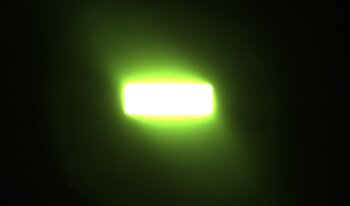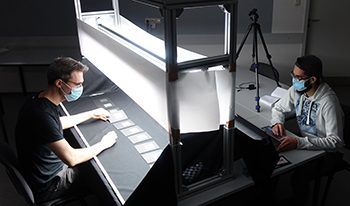
Nowadays, industrial gloss evaluation is mostly limited to the specular gloss meter, focusing on a single attribute of surface gloss. The correlation of such meters with the human gloss appraisal is thus rather weak. Although more advanced image-based gloss meters have become available, their application is typically restricted to niche industries due to the high cost and complexity. This paper extends a previous design of a comprehensive and affordable image-based gloss meter (iGM) for the determination of each of the five main attributes of surface gloss (specular gloss, DOI, haze, contrast and surface-uniformity gloss). Together with an extensive introduction on surface gloss and its evaluation, the iGM design is described and some of its capabilities and opportunities are illustrated.

A psychophysical study on two series of printed metallized surfaces, which both consisted of ten samples was performed. Two groups participated in the experiment. These were experts, who regularly judge the appearance of printed samples at their daily work, and amateurs who do not regularly visually judge and compare samples. For the experiments, a special light booth for conducting visual experiments with focus on gloss was designed and a ranking experiment was worked out. It was investigated how observers look at these kind of surfaces when asked to judge their glossiness, lightness, roughness, the sharpness of reflected images, and metallicity. All samples had the same size and nearly no hue but differed in gloss and texture. It was examined how the ratings of the targeted characteristics of appearance correlate with each other, and how they correlate with the gloss measured at the specular angles of 20°, 60°, and 85° and the distinctness-of-image measured with an IQ-S gloss meter. Additionally, observers were inquired for their individual understanding of gloss.